Montblanc, my favorite brand, symbolizes the pinnacle of craftsmanship and luxury in writing instruments. The moment Montblanc Haus was unveiled in 2021, it beckoned me irresistibly. This year, my long-awaited visit materialized, extending beyond the allure of Montblanc Haus to the very birthplace of its pens. My tour, meticulously planned since last year, coincided with the English-language tour available just once a month.
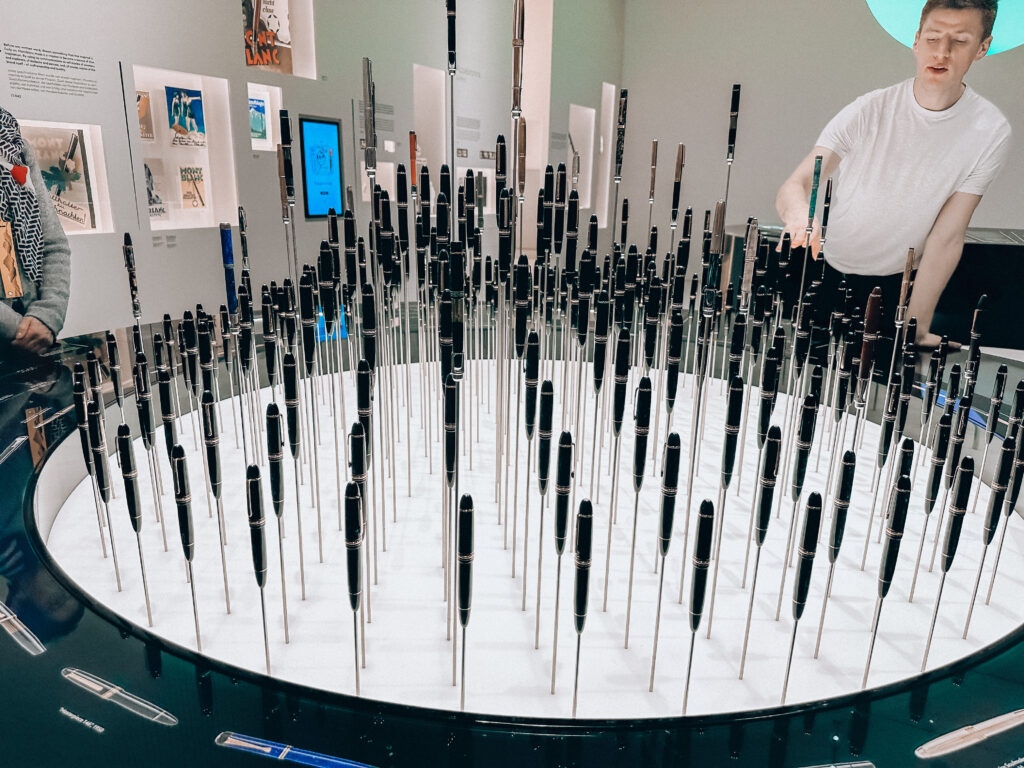
Arriving at Montblanc Haus, the sight of large shopping bags adorned with Montblanc’s iconic designs greeted us. Inside, a warm reception awaited, complete with visitor badges for us to inscribe our names and the date. A basic edition Starwalker pen was our writing companion, courtesy of our hosts. Evan, our guide, welcomed us with a smile, marking the beginning of our exploration.
The Genesis of Montblanc
Montblanc’s history is a testament to innovation, craftsmanship, and the pursuit of excellence in the luxury writing instrument industry. Established in 1906 in Hamburg, Germany, by stationer Claus-Johannes Voss, banker Alfred Nehemias, and engineer August Eberstein, Montblanc initially embarked on its journey with the name Simplo Filler Pen Company. The brand’s inception was driven by the vision to create a high-quality fountain pen that offered something beyond the standard writing instruments of the time.


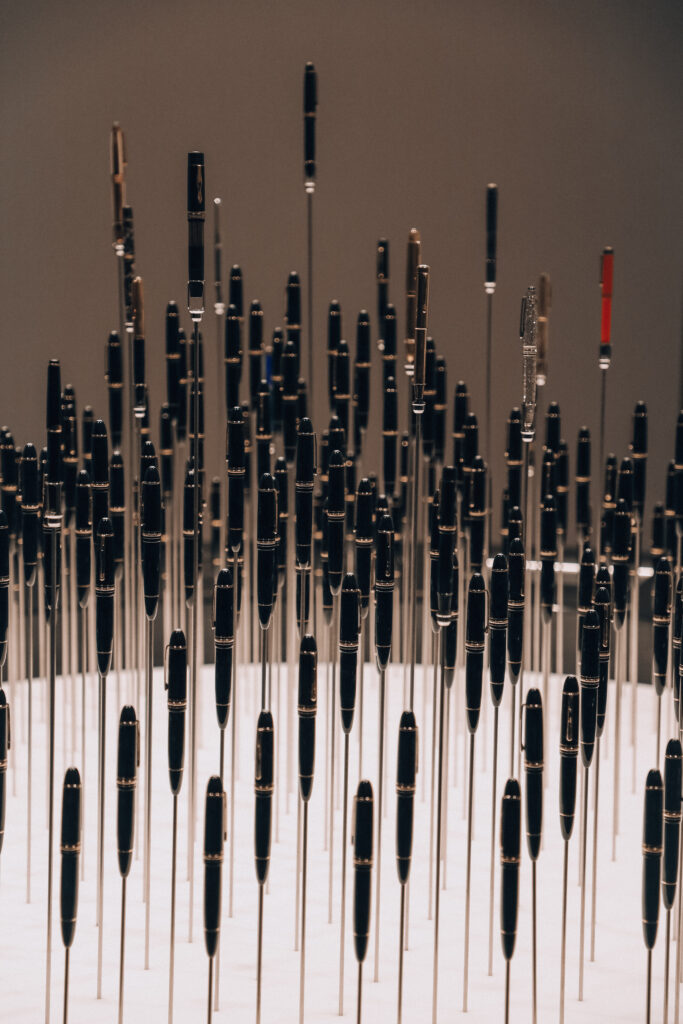

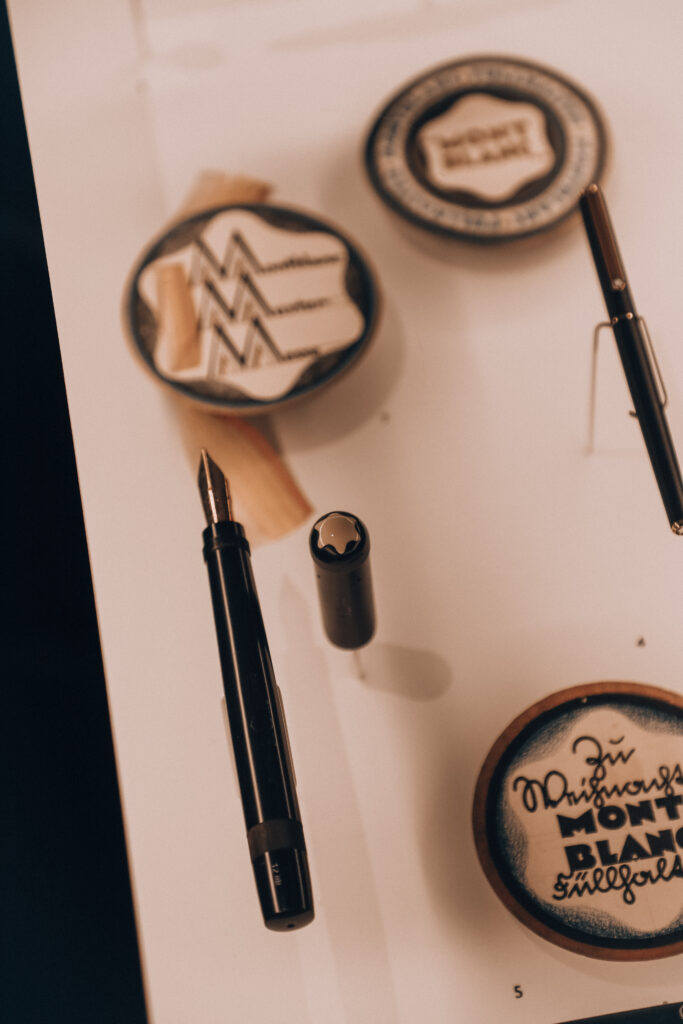
The name “Montblanc” was adopted in 1910, inspired by the highest peak in the Alps, Mont Blanc, symbolizing the pinnacle of quality, craftsmanship, and enduring value. This name became synonymous with excellence, guiding the brand’s philosophy and product development. The Montblanc star emblem, representing the snowcap of Mont Blanc and symbolizing the six glaciers of the mountain, was introduced to embody the brand’s commitment to peak performance and quality.
One of Montblanc’s earliest and most significant innovations was the creation of the “Rouge et Noir” fountain pen in 1909, which featured a built-in inkwell. However, it was the introduction of the Meisterstück (German for “Masterpiece”) in 1924 that truly established Montblanc as a premier writing instrument manufacturer. The Meisterstück line, particularly the No. 149 fountain pen, became iconic for its craftsmanship, nib design, and ink flow technology, setting a new standard in the industry.
Throughout the 20th century, Montblanc expanded its product range beyond fountain pens to include ballpoint pens, mechanical pencils, and later, a variety of luxury goods such as watches, leather goods, jewelry, and fragrances. Each product category carried the brand’s hallmark of excellence, innovation, and craftsmanship.
World War II posed challenges for Montblanc, as with many European companies. Production was hindered, and the company had to navigate the complexities of operating in wartime Europe. Despite these challenges, Montblanc continued to maintain its quality and craftsmanship, ensuring the brand’s survival and future growth.
In the post-war era, Montblanc solidified its position as a luxury brand, focusing on expanding its international presence and diversifying its product offerings. The 1970s and 1980s saw Montblanc’s entry into the broader luxury goods market, further establishing its status as a symbol of sophistication and high society.
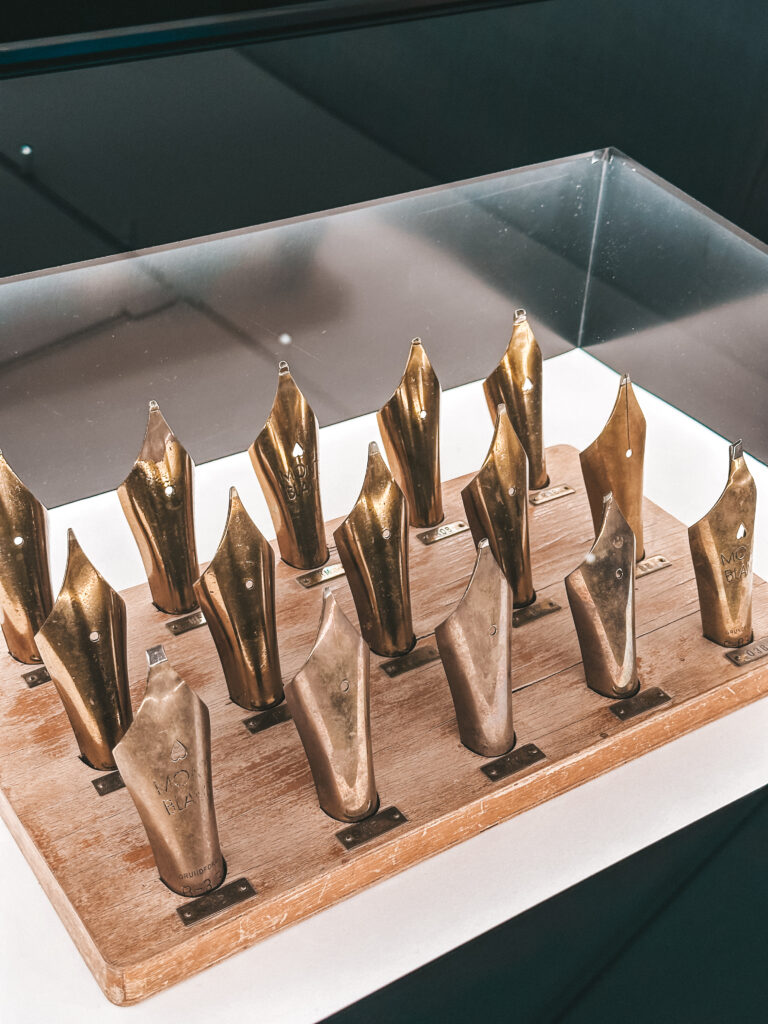
The late 20th and early 21st centuries marked a period of significant expansion and innovation for Montblanc. The introduction of limited edition collections and collaborations with artists, writers, and cultural icons added to the brand’s allure and collectibility. Montblanc also embraced technological advancements, incorporating new materials and techniques into its manufacturing processes, while remaining true to its heritage of handcrafted precision.
Today, Montblanc stands as a global leader in the luxury market, with products that embody the art of writing, timeless design, and the pursuit of excellence. The brand’s dedication to nurturing cultural projects and promoting arts and literacy through various initiatives reflects its commitment to making a positive impact beyond the luxury industry. Montblanc’s journey from a small pen manufacturer in Hamburg to a global luxury icon demonstrates the enduring power of vision, innovation, and dedication to craftsmanship.
The Meisterstück Phenomenon
The first pens we saw were, of course, from their most classic line, the Meisterstück. They have a beautiful large installation of Meisterstück pens in all possible variations from every era, ranging from the absolute classics to pens encrusted entirely with diamonds. The Meisterstück celebrates its 100th anniversary this year since the first pen was produced. It’s wonderful that I found myself at this place precisely on the 100th anniversary.
To add to the history of the Montblanc Meisterstück collection, it’s noteworthy to mention that since its inception in 1924, the Meisterstück has been regarded as a symbol of high craftsmanship, quality, and tradition. The Meisterstück, which means “Masterpiece” in German, has been crafted with an unwavering commitment to excellence, embodying the pinnacle of writing culture. Each pen is meticulously handmade by skilled craftsmen using the finest materials and techniques developed over Montblanc’s long history.
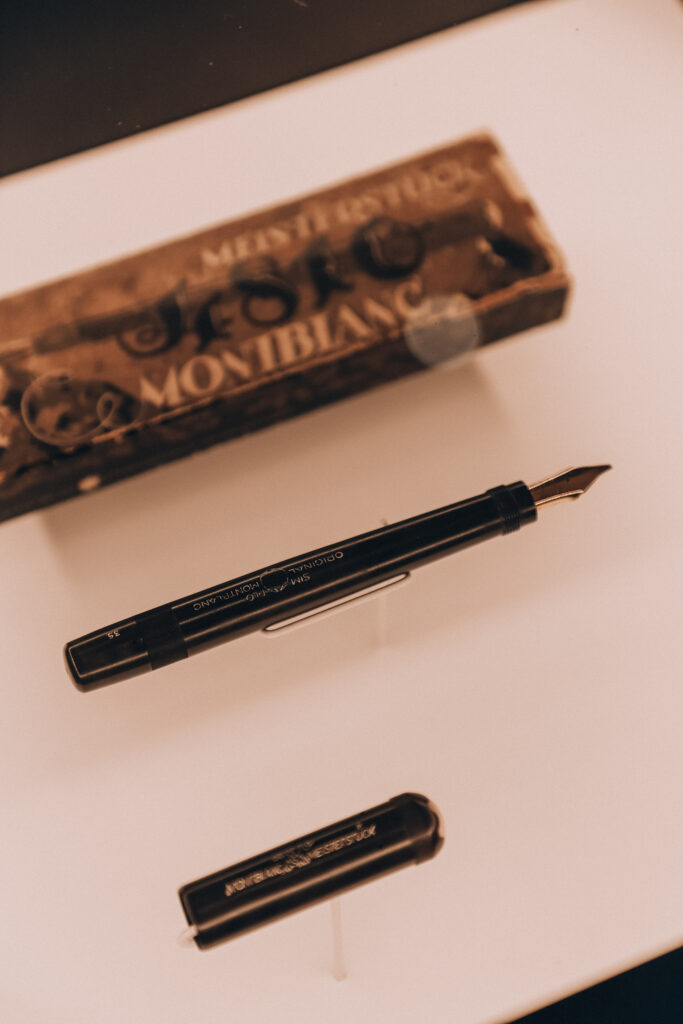
The Meisterstück 149, one of the most iconic models, has become a status symbol among fountain pens. Known for its precious black resin and gold or platinum-coated details, the Meisterstück features a handcrafted gold nib that is carefully inspected and tested by Montblanc’s master craftsmen to ensure the best possible writing experience.
Over the years, Montblanc has expanded the Meisterstück collection to include various writing instruments, including fountain pens, ballpoint pens, rollerballs, and mechanical pencils, each adhering to the same standards of quality and craftsmanship. The collection has also featured limited editions and special versions that celebrate cultural icons, historical events, and artistic achievements, further solidifying the Meisterstück’s legacy as more than just a writing instrument but a piece of cultural history.

The Meisterstück’s 100th anniversary not only marks a significant milestone for the collection but also celebrates the enduring legacy of Montblanc in the luxury writing instrument industry. This anniversary is a testament to the timeless design, innovation, and craftsmanship that the Meisterstück represents, making it a cherished possession and a symbol of achievement for generations of writers and pen enthusiasts around the world.
Limited Editions
The tour proceeded to an area dedicated to limited editions, featuring both renowned and elusive pieces. Among them were replicas not made of original materials, such as glass instead of diamonds, and three ultra-limited editions, one being a unique LE1, with some pens valued over one million euros. The Montblanc Little Prince editions, among others, particularly captivated me.

Montblanc Post
Of course, this is something you’re familiar with from Montblanc boutiques. Even in Montblanc Haus, the Montblanc mailbox, where you can send a postcard to anyone for free, is an essential feature. We naturally took advantage of this opportunity and sent postcards to our sons. They will now have a postcard with the unique design of Montblanc Haus.

Handwriting of the Famous
The last room is also very intriguing, where the walls are adorned with the handwriting of famous people, artists, actors, singers, and more. It’s fascinating to see such a beautiful collection and not just that, but to observe how each person wrote or writes was captivating for me. In the center of this room, there’s a huge white table shaped like the Montblanc emblem, with a chair at its ends, an Augment paper notebook, and a pen where we could leave a message. I left my Instagram profile there, and perhaps someone will find me. It’s time to leave this beautiful writing gallery and move on to the production area.
Inside the Manufacture: The Craftsmanship of Nibs
Unfortunately, I had to put my camera aside here because it is strictly forbidden to photograph or record the manufacturing and production processes. First, we visited what was for me the most interesting department: the production of nibs. This is where gold is literally in the air. Although most of it is contained within a large machine that also serves as a vault. After melting, the gold is made into sheets that resemble film strips. These strips are then cut into nib shapes and further processed, going through stamping, bending, cutting the nib, adding the ball, grinding, and finally testing.
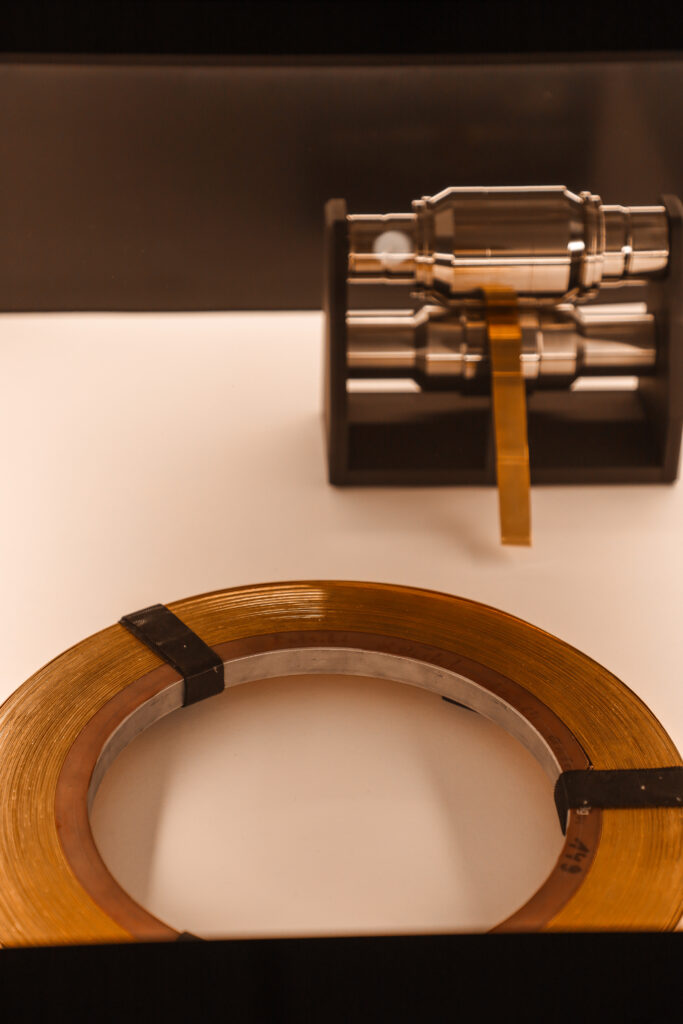

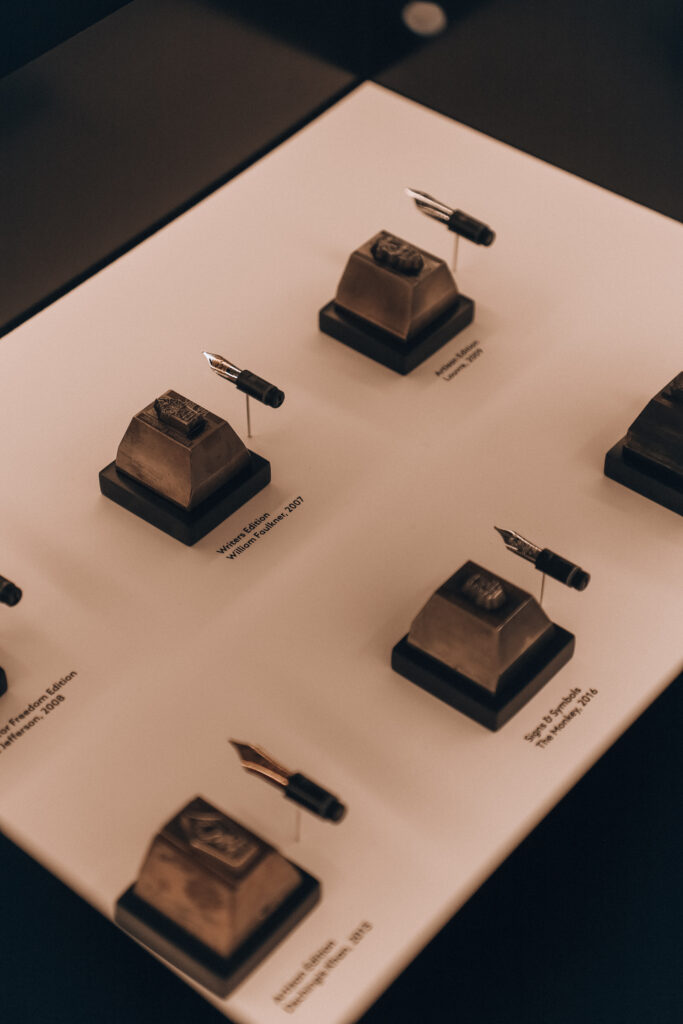

To produce a single nib, 34 steps are required, many of which are done by hand. There’s also an archive of all the dies that have ever been made, and if you want a new nib for any pen, they will pull it out of a drawer and make it for you. If you were not satisfied with your old nib, they would take the old one, melt it down, and make a new one. All the gold here is recycled, any scrap or speck. They even filter the air and collect gold from it. The floor is covered with special parquet that captures these gold particles so they can be used one day. However, the entire room feels like a library, both in atmosphere and in the way the employees do their work. I was particularly impressed by how they manually grind and polish each nib, looking through a magnifying glass. The testing of the already made nibs is also very interesting, where they use invisible ink. By drawing eights with invisible ink in a soundproof room, employees listen to how the nib writes and determine whether it is good or not. Limited editions and randomly 10% of all produced pens are tested again once the nibs are set into the pens. I even saw a limited edition of the Montblanc Meisterstuck 100th anniversary pen in red being tested. An interesting fact for me was also that the slit through which the ink flows to its tip is made with a graphite disk, which is very fragile. If you were to hold it in your hand, you would break it.
However, they use a certain proportion of diamond particles, which allows them to make a beautiful, clean cut without waste.
Platform production
In addition to every component and every small detail of the pens being manufactured here, platforms, molds for castings, and all the metal parts that make the pens are also produced. The manufacturing of such platforms involves these products being specially polished by employees, who may spend more than two working days manually polishing a single piece. Often, a single platform has a lifespan for making 3,000 pens. In the case of a complex and intricately designed pen, it could be even less. It’s hard to imagine how they manually polish the Montblanc emblem, without any rotating machinery. It’s a very delicate, precise job.
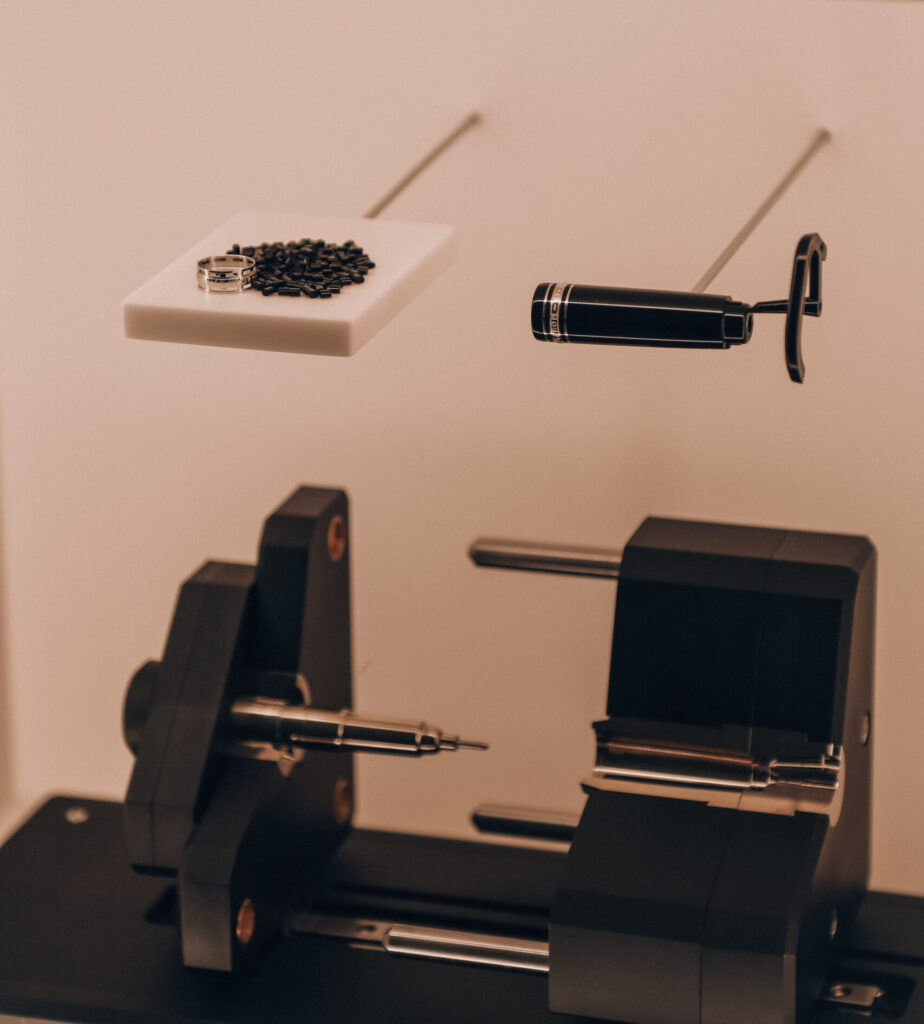
The loudest room in the production area is where the castings are made, the mass is melted, and poured into molds under a high pressure of 20 bars. This is also the only place where the operation is continuous. If the machines were turned off, it would take more than 16 hours for them to warm up to operating temperature and calibrate. However, I can tell you that the noise wasn’t terrible. I could work here too. This room had two levels. On the lower level, large machines produced the larger parts of the pen. But if you imagine, for example, the cap of the pen, it was made by a machine 1,000 times larger. On the upper floor, smaller machines made components, such as the Montblanc emblem on the top of the cap.
High Artistry
This is said to be the most interesting place in the entire production process. Here, all those unique pieces, ultra-limited editions, and special editions made to order are created. There were about 6 or 7 round tables, where each employee had their own space and peace for the very important work of manually producing each edition. They all have my great admiration for the results they deliver. Such a pen starts as a large model, which is printed on a 3D printer, and we saw, for example, the cap of a pen that was about 20 times larger than it would be in reality. These 3D products then serve as a template for the production of these very limited pens, which are also made from premium materials. Often, rare minerals, gemstones, wood, and even marble are used here.
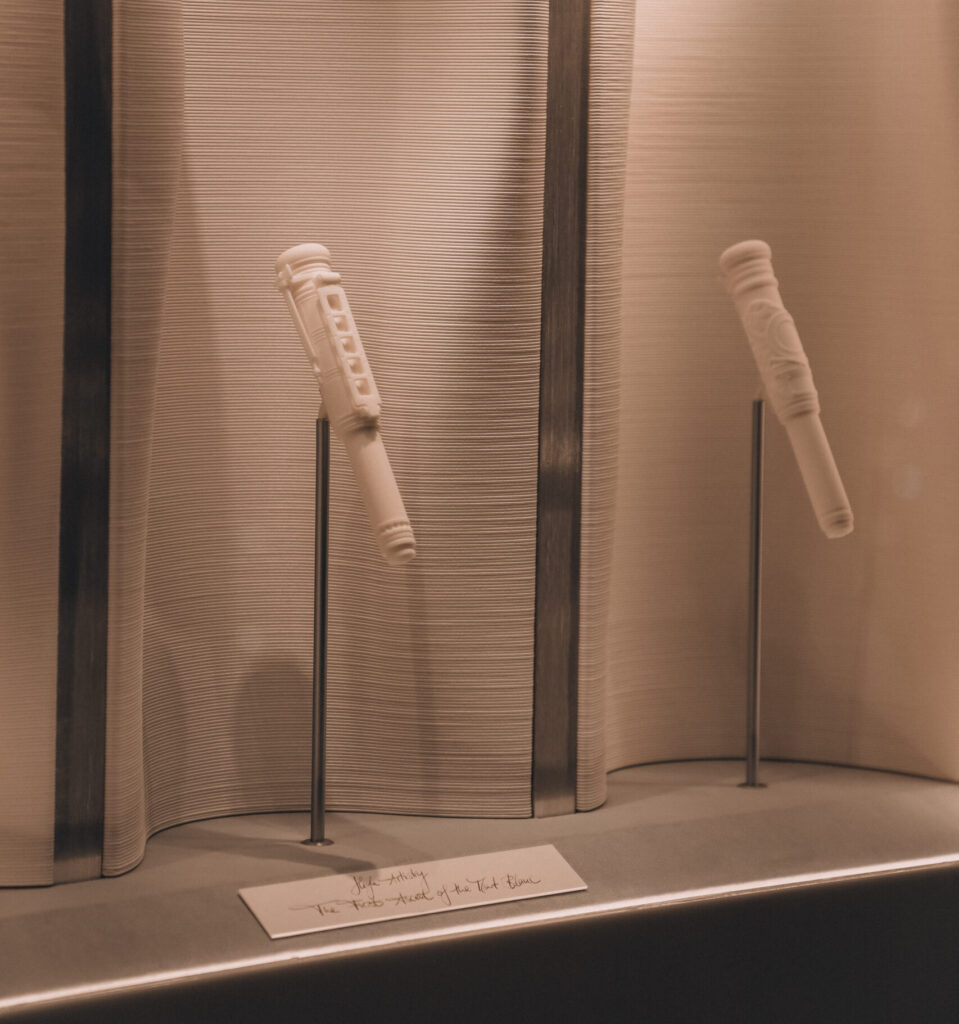
It’s perfect that every single pen made here is, in a way, a unique piece, thanks to these materials that have slight differences. They even showed us some pens that you don’t see every day, for example, the MONTBLANC Master of Marble Homage to Michelangelo Limited Edition 96 made of marble, valued at over €40,000. Additionally, there was a pen like the MONTBLANC Gustave Eiffel Skeleton Artisan Limited Edition 91 Fountain Pen and similar. Simply true gems. If you had enough money to spare, they would also make a custom one, according to your specifications.
The People Behind Montblanc
I was surprised to see that the employees here are smiling, satisfied, and have an average tenure of 22 years, with over 1200 of them working in Hamburg. Additionally, I appreciated that there is a great deal of trust in employees who work with gold, trade secrets, and the like, so they are not monitored. This is very appealing, and I would love to work in such a company. They surely recognize the value of their employees, without whom it simply wouldn’t be possible. It’s beautiful to see how it all works.
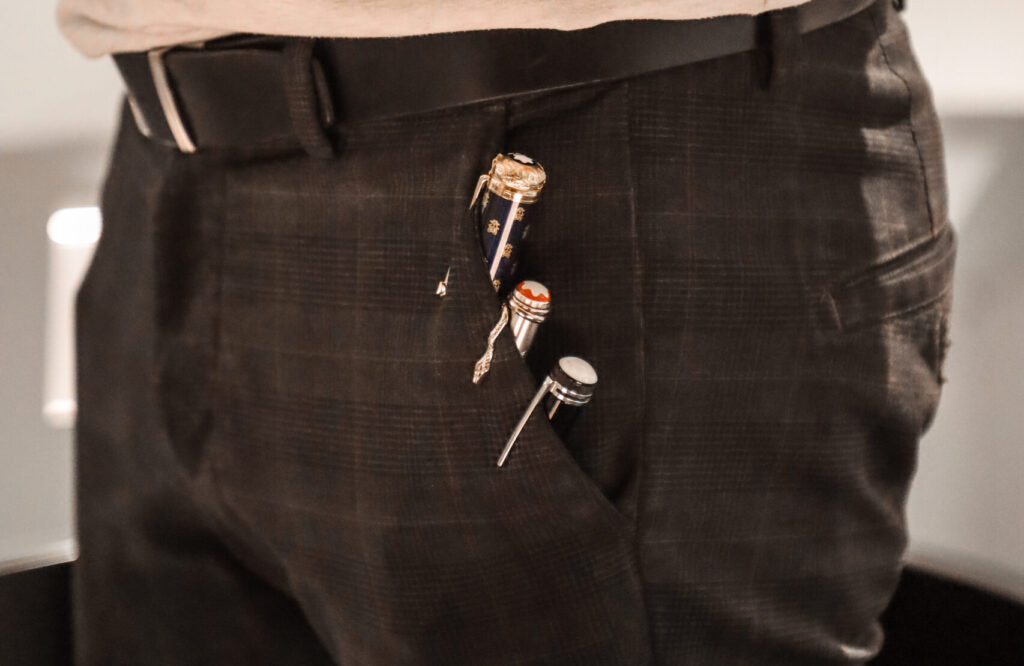
Montblanc Boutique and Café
Of course, there is also a boutique here where you can find a curated selection of products. If you’re looking for a wide range of leather goods and other accessories, this is not the right boutique for you. This boutique is all about pens and writing. You’ll find special products here that you can only buy at this location, whether it’s stationery items like postcards, blocks, notebooks, and the like.
The most interesting product is the special edition Meisterstück pens, the Haus edition, which you can only buy here. The Le Grand version of ballpoint, rollerball, and fountain pen, so everyone can choose something for themselves. In addition, they sell a unique design (which is on the nib of the pen) also on a leather notebook. If this notebook doesn’t suit you, you can have the Montblanc Haus engraved on any notebook along with your initials, of course, while you wait. Payment here is by card only, which is convenient.
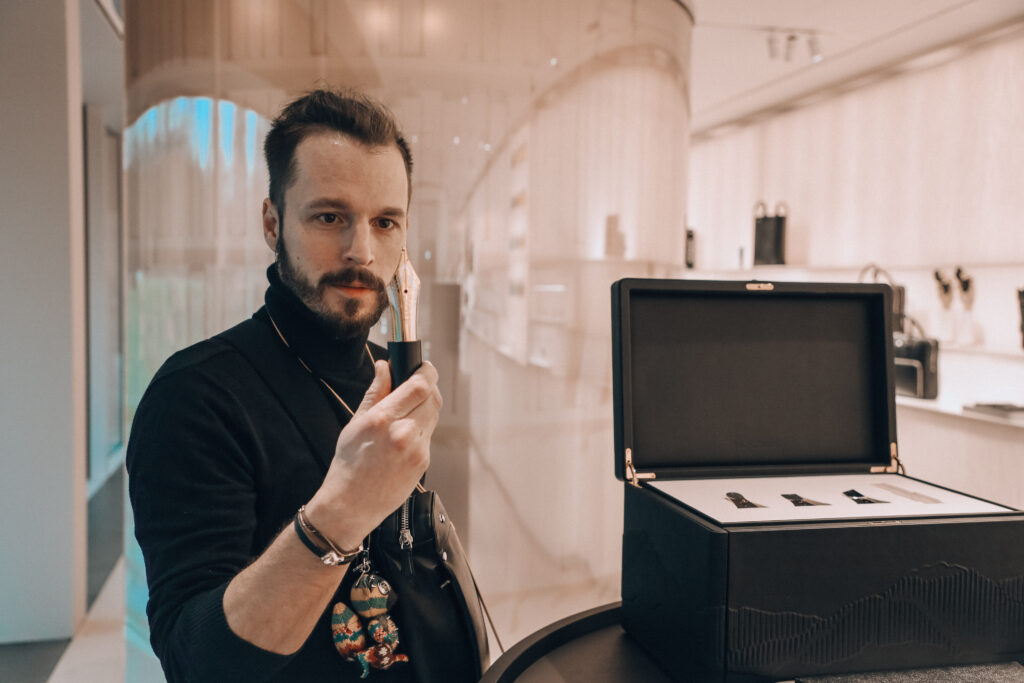
In the café, we had cakes, cappuccino, and of course, my Ristretto. We were served in beautiful design ceramic cups, there was a comprehensive book about Montblanc from Assouline available, and the entire café had a relaxed atmosphere. If I lived in Hamburg, I would come here for coffee even if I were on the other side of the city.
I extend my heartfelt thanks to my wife for accompanying me on this remarkable journey, a testament to our shared appreciation for the art of writing and the enduring legacy of Montblanc.


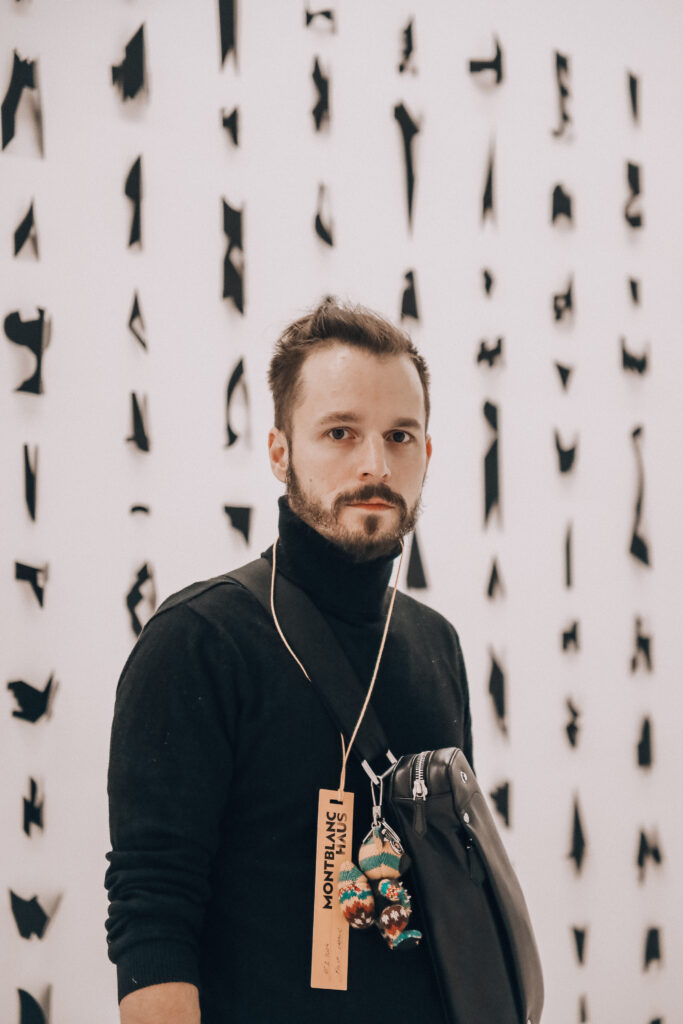
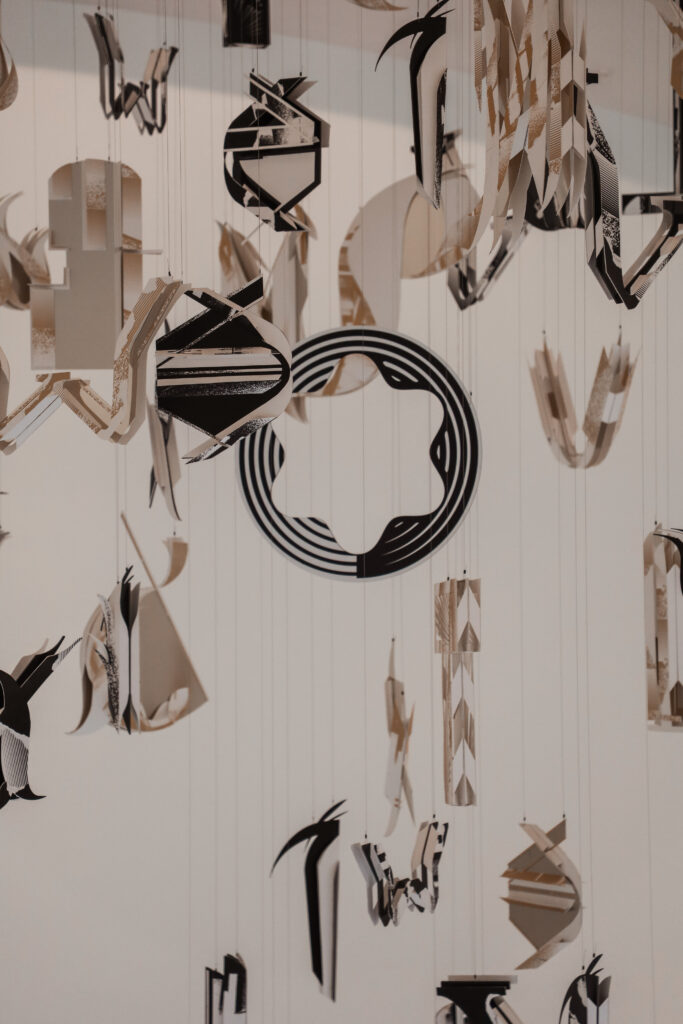
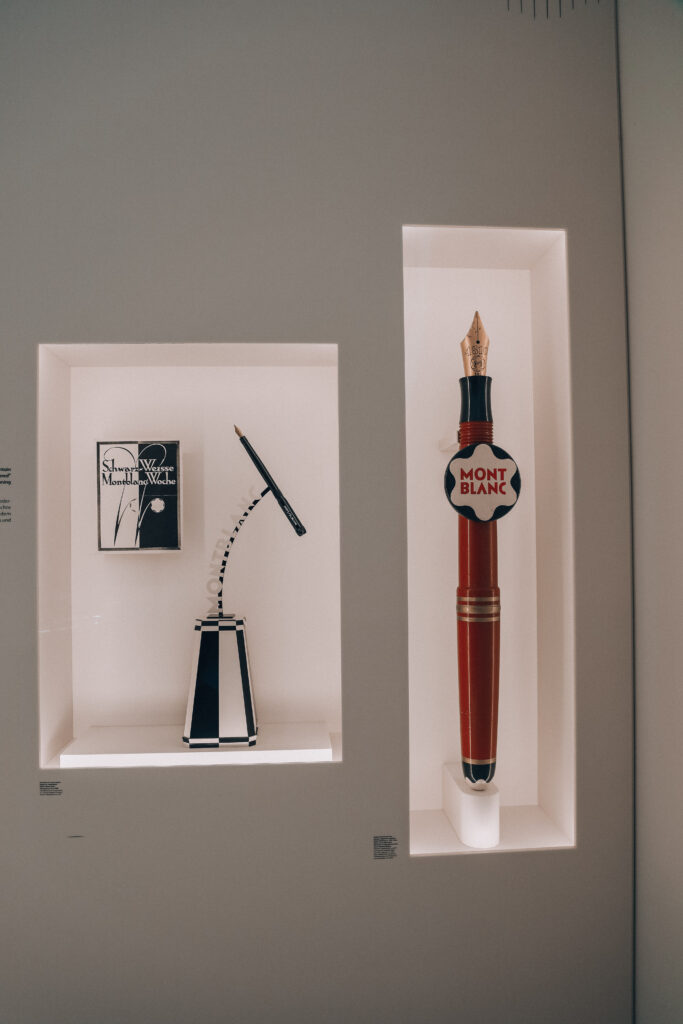
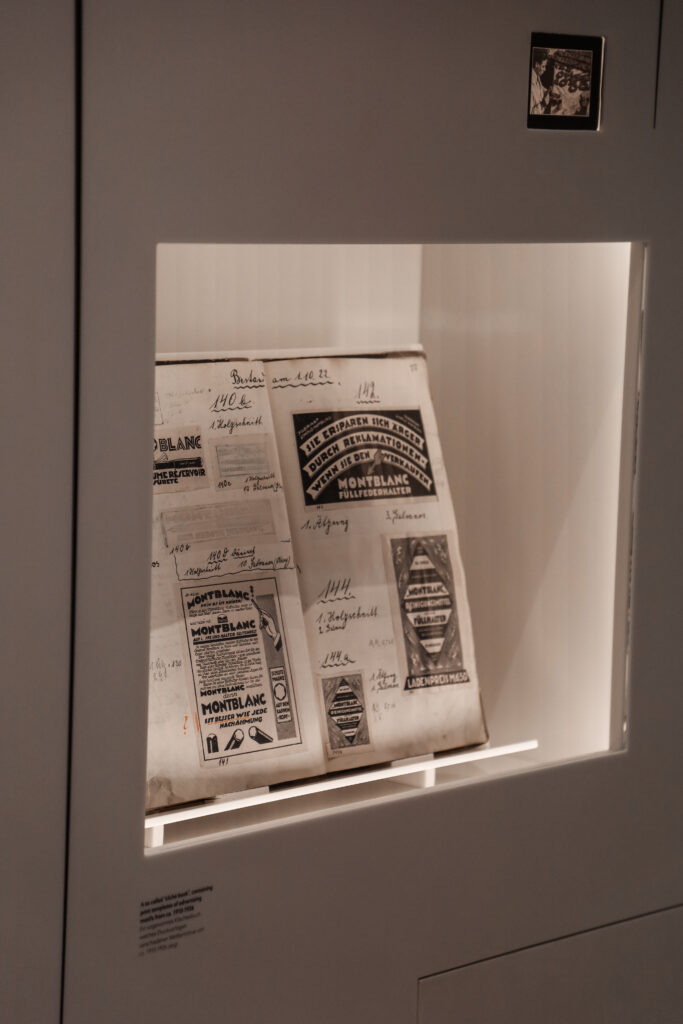
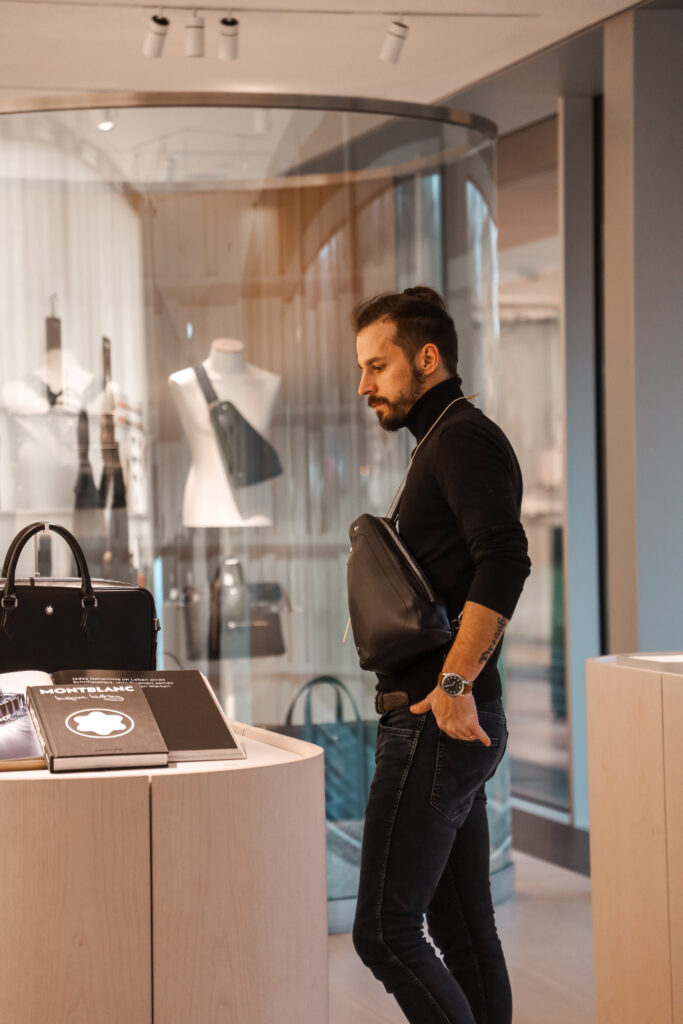


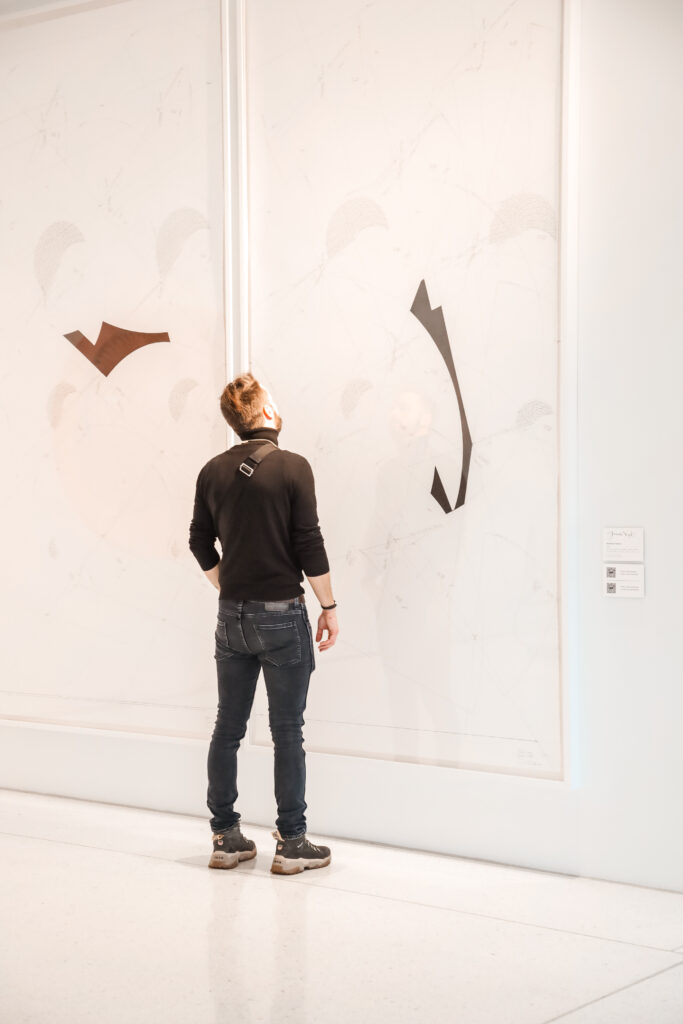









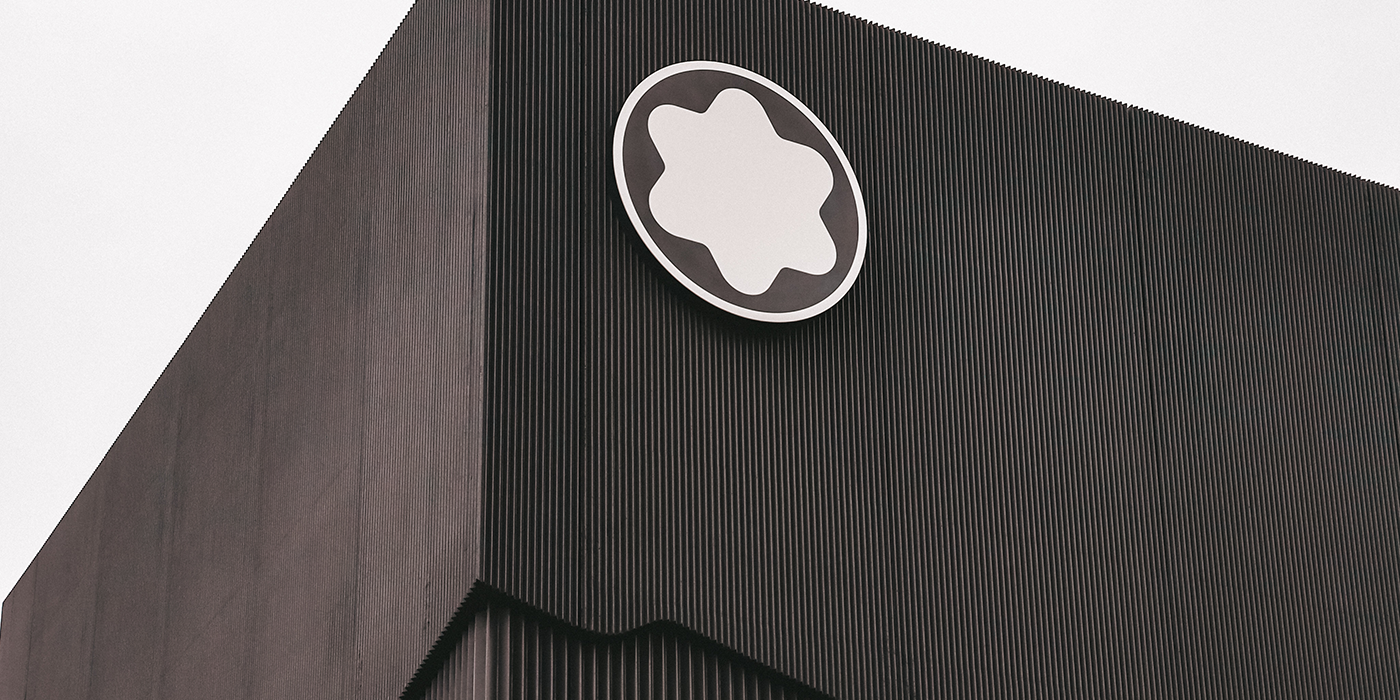
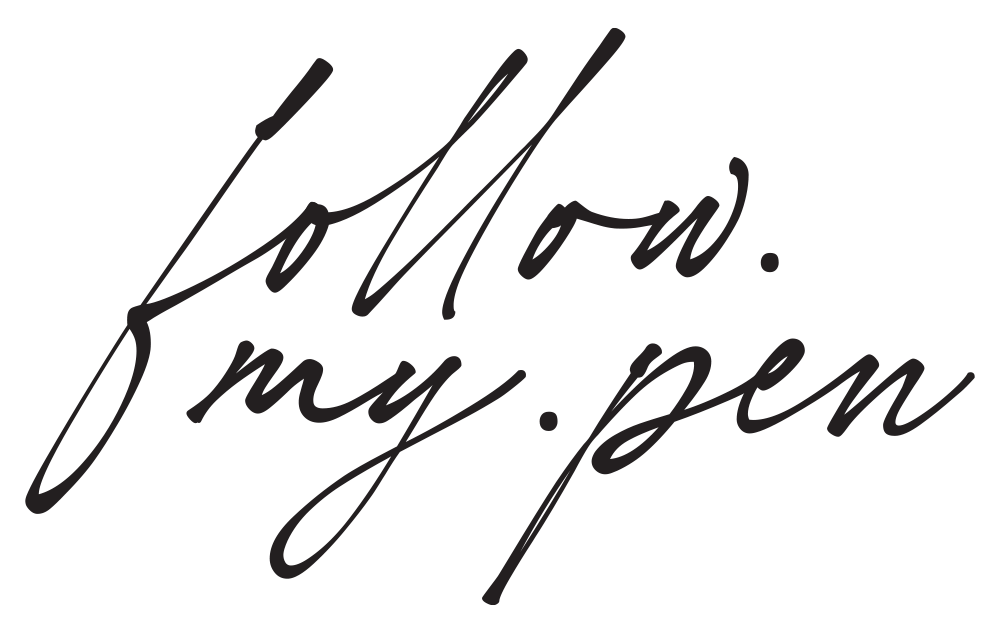
1 Comments:
Zach Meade Says: on 21. February 2024
I got to visit this place in January 2024. It was an absolute dream come true. This was a great synopsis of the experience. I really appreciate your take and your photos. I hope one day I get to go back and experience the full English spoken tour. Thank you for sharing